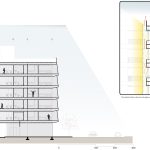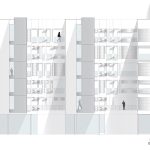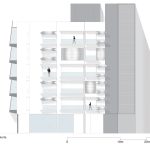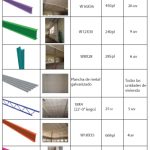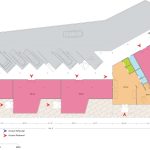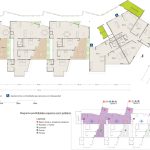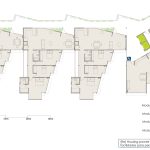Oasis sonoro
“What would happen if we run out of ‘x’ material?”. – E. Pérez
Designer: Emmanuel Pérez
Thesis Director: Humberto Cavallín
Project Date: UPR may, 2013
TOS[er]: Alexis X. Estrada Cora
Posted: may, 2013
Design Objectives:
- Deconstruction: building dismantled to obtain a maximum amount of materials in good condition.
- Obtain cost-efficient materials.
- Save landfill space and natural resource.
- Avoid demolition process, cost and environmental impact.
Results:
- The new proposal reused: concrete (1.9%), steel trusses (26%), and steel columns (5%), steel beams (22%).
- Mixed-use building: commercial and residential.
- 4 commercial spaces.
- 25 apartments (5 per floor).
- Natural ventilation and lighting.
- The proposal recognizes the importance of the urban pedestrian and the importance of common spaces for social interaction.
Designer’s Approach:
- “We (architects) have a mission to go beyond making “beautiful” buildings, if we do not assume that responsibility of also making functional buildings, we are contributing more to the problem than the solution.” [E. Pérez]
Important Facts:
- 15-18% of the waste going to landfills in Puerto Rico comes from demolitions and wasted materials of new constructions and remodelations.
- There is an imbalance between medium class people and the value of costly apartments. The deconstruction process it is supposed to drive down the costs per square foot of each dwelling.
3-step intervention:
- Step 1: Strategy
- “Materials are not infinite, why not reuse recovered materials (structural and non structural) and combine them with precast materials, designing with the modulation parameters available?” [E. Pérez]
- Generate visuals, ensure natural lighting and ventilation in each inhabited space.
- Generate spaces that can be transformed to promote social interaction.
- Step 2: Documentation
- Identify an abandoned or unused building (Edificio de Fomento’ at Lucchetti Industrial Area, Bayamón, Puerto Rico).
- Catalog all preexisting items in the site by name, model, dimensions, image, recovered quantity, actual condition of the material and housing unit supplied.
- Step 3: Aesthetic / ReUse
- Challenge form and function considering recovered materials (structural and non structural) and precast materials as primary resources on the design. Also consider visuals, natural ventilation and light, programing, regulations, construction cost, energy consumption and integrative process in a sustainable way.
TOS[er] Reaction: The academy is where we must begin the exercise of efficient use of materials, not only for reducing construction cost, but also to keep in mind all the problems we are causing. Taking into account that from 15-18% of the waste going to landfills comes from demolitions, new constructions and remodeling, we have to find new options, such as, REUSE, recycling and modulation.
In new design, modulation is the perfect tool (with prefabrication) to avoid wasting material in construction sites. This project achieves an aesthetically attractive design using pre-established modulation and the utilization of recovered materials. This means that from the beginning, the goal of the design process, was to use as less raw material as possible. It’s necessary to UNDERSTAND that materials are not infinite.
Being that we are responsible for all decisions in a project – from conception to execution – we must aspire to an efficient use of materials; which implies an efficient use of human resources too. Emmanuel’s thesis teaches us that all aspects must be taken into consideration from the very first day of a design process.


